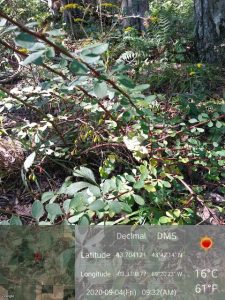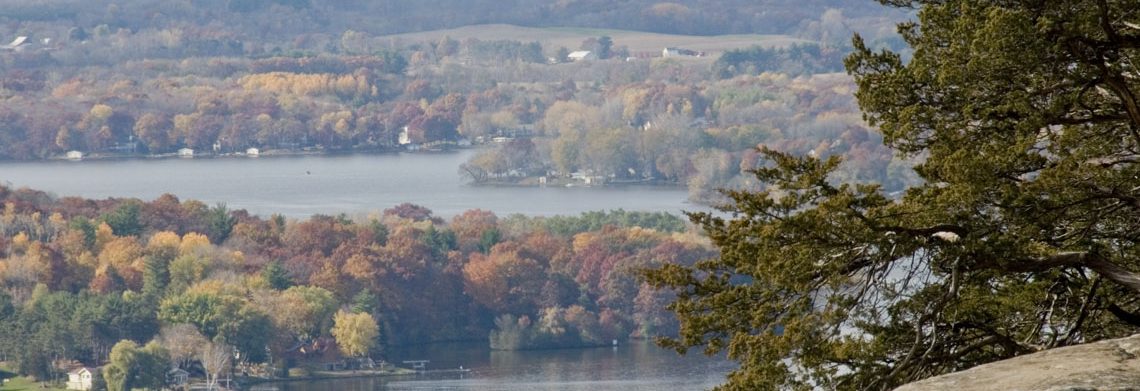Japanese barberry
Berberis thunbergii

Description:
Leaves & stems: Clustered in tight bunches above spines, the leaves are simple, alternate, small, and oval to spatulate shaped (wider at the tip than the base). Leaves may be green, bluish green, or dark reddish- purple depending on the cultivar. They leaf out in early spring. Plants have single sharp spines at each node. If a stem is cut, it will reveal that the inner bark is yellow. Branches root freely when they touch the ground. Flowers: Flowers are cream-yellow colored, bowl-shaped with notched edges and 6 petals, and small (1/3” wide). They occur individually or in small clusters of 2-4, blooming in mid-spring. Fruits & seeds: Small, bright red, oblong berries occur on narrow stalks both singly or in clusters. Berries persist on shrub into winter. Seeds are readily dispersed by birds. Roots: Creeping, shallow roots are tough. Interior of roots are yellow. Branches root freely when they come into contact with ground. Similar species: European barberry or common barberry (Berberis vulgaris) is also a non-native invasive (classified as Prohibited) but has spiny, toothed leaves and flowers in a long raceme. Source: Wisconsin DNR Invasive Species website.
Locations:
Found in woodlands, wetlands and prairies. Prefers well-drained soils and sunny habitats, but will survive and produce fruit in even heavily shaded environments.
Impact:
- Creates dense thickets where nothing can grow.
- Shade tolerant, drought-resistant, and adaptable to a variety of open and wooded habitats, wetlands, old fields and disturbed areas.
- Spreads vegetatively through horizontal branches that root freely when they touch the ground.
- Harbors Lyme disease-carrying ticks.
- White-tailed deer avoid browsing barberry due to the spines, giving it a competitive advantage.
